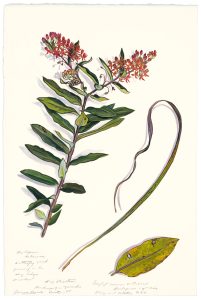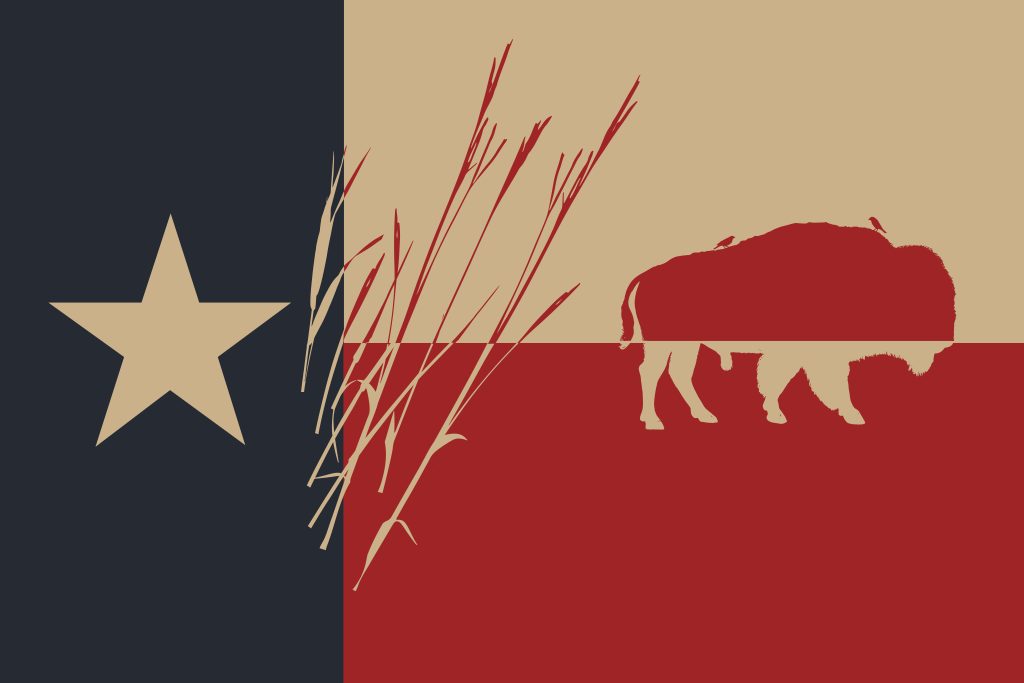Trespassers Explores the Boundaries in Texas’ Grasslands
The Amon Carter Museum of American Art (the Carter) to present new work by Connecticut-based artist and naturalist James Prosek in Trespassers: James Prosek and the Texas Prairie this fall exclusively at the Carter. On view September 16, 2023, through January 28, 2024, the exhibition features more than thirty artworks ranging from murals to sculptures that investigate the allure of Texas’s grasslands while raising important questions about the boundaries that shape, limit, and define prairie spaces in the present-day.

James Prosek (b. 1975), Invisible Boundaries No. 2 (Texas), 2023, silkscreen on panel, Courtesy of the artist, © James Prosek
Over the past two years, Prosek has traveled to grassland habitats across the state of Texas, ranging from urban restoration projects to unplowed remnant prairies, in order to document the rich plant and wildlife diversity of these ecosystems. Along the way, he met with ranchers, scientists, landscape architects, philanthropists, and ornithologists who share a passion for grassland conservation and restoration, discussing issues ranging from climate change and watershed health to invasive species and the loss of cultural and biological diversity. Inspired through these travels, Trespassers will feature new works of art by Prosek, including a site-specific mural, large-scale acrylic and silk-screen paintings, watercolor portraits of plants collected during his travels, and tromp l’oeil clay and bronze sculptures of wildflowers and burned logs.
“Trespassers is the next project in a long tradition of the Carter working with living artists, shining a light on a truly remarkable talent who is raising awareness and expanding the conversation around the preservation of Texas’s grasslands through his artistic practice,” said Andrew J. Walker, Executive Director at the Carter. “The work created by Prosek in this exhibition uniquely highlights the beauty of these spaces and builds on our efforts to engage with Texas history and culture through art.”

James Prosek (b. 1975), Prairie paintbrush and other elements (Clymer Meadow, Celeste, Texas), 2022, watercolor, gouache, powdered mica, graphite and colored pencil on paper, Courtesy of the artist, © James Prosek
This exhibition illuminates the contemporary conservation challenges facing Texas grasslands. Combined factors of agriculture, ranching, urban development, natural resource extraction, and fire suppression have reduced tens of millions of acres of grassland to a patchwork of isolated sites. Prosek’s works in Trespassers invite viewers to reflect on how these now rare places often elude or confound the boundaries that humans seek to impose on them. Through paintings, watercolors, and bronze sculptures, Prosek draws attention to the complex reality of contemporary grasslands, particularly the ways that their ecology and history blur clear distinctions between human and non-human worlds, as well as what we consider wild and human-altered landscapes. Collectively, the works in this exhibition offer new ways of imagining and representing nature, while provoking and enriching conversations about the future of conservation in Texas.
“Working with Prosek on this project has been a special experience,” says Spencer Wigmore, Associate Curator of Paintings, Sculpture, and Works on Paper at the Carter. “Not only does his art engage with some of the most pressing conservation challenges of our era, it invites us to reflect on deeper, more fundamental questions about how we attempt to interpret and order the natural world. Grasslands need advocates more than ever, and Prosek is a thoughtful and observant guide to what these spaces have to offer.”
The works on view in Trespassers include:
- Texas Prairie Composition No. 1: One of Prosek’s iconic large-scale silhouette paintings. This eight-by-eight-foot work will consist of a swirling pattern of hundreds of silhouettes of animal species native to Texas grasslands, past and present. The silhouettes nod to some of the earliest known drawings of animals, which are often just the outline of an animal on a rock wall (such drawings can be found on sites in the Trans-Pecos region of West Texas).
- Trespassers No. 1: As a companion to Texas Prairie Composition No. 1, this work will convert two of the gallery walls into a temporary, site-specific mural of life-size, black-and-white silhouettes of flora and fauna from the Blackland and Trans-Pecos grasslands. The mural is part of an ongoing series of works that engage with the imagery of popular field guides, which often use silhouettes to help readers identify animals. But unlike these guides, Prosek’s painting lacks an explanatory key of names. His animals with adjoining numbers invite viewers to reflect on the impulse to name and categorize the natural world.
- Grassland portraits: These portraits include more than twenty watercolors of plant specimens gathered from sites across Texas. Rendered life-size and created for the exhibition, these watercolors emphasize the individuality of plant specimens—the idiosyncrasies, imperfections, and traces of their immediate surroundings that are often edited out in the imagery of field guides or taxonomy manuals.
- Invisible Boundaries No. 2 (Texas): This silk screen on panel continues Prosek’s investigation of nature within the symbolism of state and national flags. Superimposing silhouettes of bison and little bluestem grass over the Texas flag, so that nature crosses the boundaries formed by the grid of the flag’s colors, the work alludes to histories of plant and animal ecosystems that intersect, and occasionally come into tension with, state and national boundaries.
- Sculptures: Prosek has created a variety of trompe l’oeil clay sculptures of wildflowers mounted on burnt logs cast in bronze. Virtually indistinguishable from living plants, Prosek’s hand-sculpted clay renderings engage with a long tradition of artists attempting to make ephemeral aspects of nature fixed and permanent through acts of representation. In addition to these five works, Prosek has created a bronze self-portrait bust of the artist as a burned log—a work that speaks to personal histories of re-growth in the aftermath of trauma, as well as to broader questions about who has the privilege of speaking for prairie spaces in the present-day.
Trespassers: James Prosek and the Texas Prairie is organized by the Amon Carter Museum of American Art. The exhibition is supported in part by Kim and Glenn Darden, the Richard P. Garmany Fund at the Hartford Foundation for Public Giving, Waqas Wajahat, and Fernando Yarrito.

James Prosek (b. 1975), Invisible Boundaries No. 2 (Texas), 2023, silkscreen on panel, Courtesy of the artist, © James Prosek


 Sign in
Sign in

